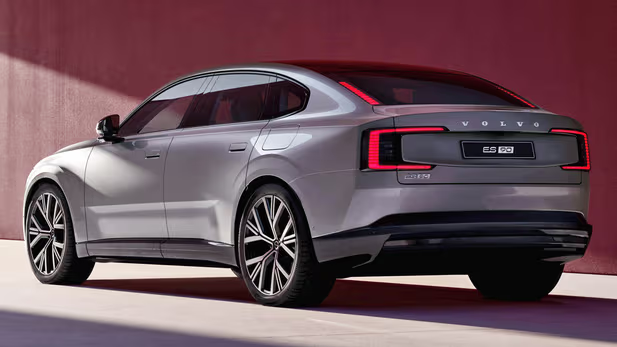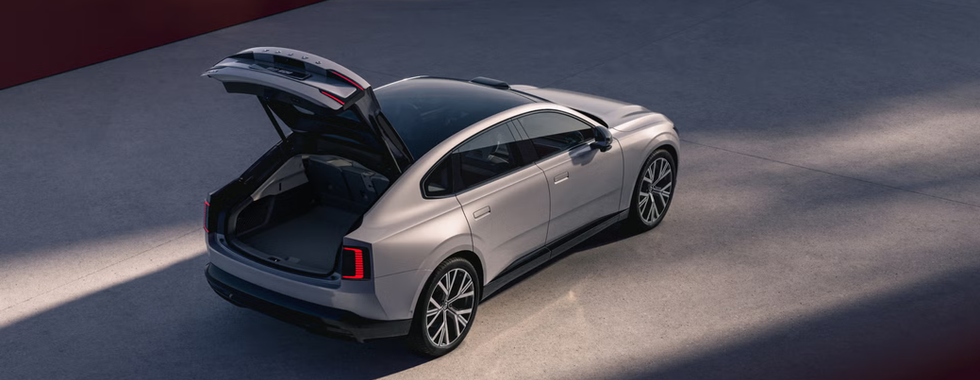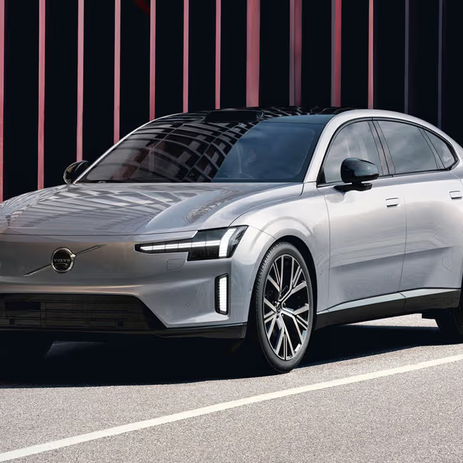The new 2026 Volvo ES90: What We Know So Far
- BY LWAZI TWALA

- 9 hours ago
- 3 min read

The Volvo ES90 is shaping up to be a standout model in Volvo’s electric lineup. The Swedish brand Volvo announces a luxury sedan to its collection, which is currently being produced in Chengdu, China. The speculation is that this new electric ES90 is built on the same platform as the EX90 SUV, which was created in South Carolina in the USA. The ES90 combines the elegance of a sedan, the adaptability of a fastback hatch, and the practical height cues of an SUV. So it has a genre blending, not fully committing to one body style.
The 2026 Volvo ES90 is expected to start at around $70,000 (approximately R1.4 million) for the base single-motor version. Global markets suggest that more premium trims could go up to about $82,000 (approximately R1.65 million). In South Africa, however, you’ll need to factor in import duties, VAT, luxury car tax and other local charges, so a realistic estimate for the ES90 could start around R2.1 million to R2.3 million for the entry model, with top-spec versions possibly approaching R2.5 million or more.
This makes sense given how premium EVs are currently priced locally, and it underlines that while the ES90 offers cutting-edge tech and performance, it sits firmly in the luxury-EV bracket in South Africa.
Power and Performance
Volvo says the single-motor variant can shift 60 km/h in 6.7 seconds while the all-wheel-drive with 442(KW) horsepower can do it in 5.3 seconds. Its twin motor performance is said to shift to 60 km/h in 3.9 seconds. This underpins its “Superset tech stack” approach, the modular hardware plus software that can evolve. The ES90 introduces an 800V system, which enables faster DC charging rates, taking it from 10 percent to 80 percent in approximately 20 minutes. Rather than pushing for a higher top speed, Volvo seems to place more emphasis on a balance of performance, range, and, of course, safety, with the top speed limited to 180 km/h.
The ES90 shares its platform and parts of its architecture with the EX90, but the EX90 surpasses it in computing power, features a higher voltage system, and more aggressive fast-charging targets. The EX90 is an SUV with a distinct body shape, weight, and seating configuration. The ES90 is a sedan hybrid in shape, so handling, drag, interior packaging, and user cases are different. Because of the difference in weight, drag, and target use, the ES90 achieves better range in some scenarios than the EX90.
Performance varies by model. The single-motor ES90 uses an 88-kWh battery capable of roughly 547 km (340 miles) of range, while the Twin Motor variant upgrades to a 102-kWh pack delivering about 595 km (370 miles) per charge. Even the smaller pack charges quickly, ensuring both versions deliver efficiency and convenience suited for long-distance travel.
Interior, Infotainment and Connectivity
The ES90 interior, comfort, and cargo have a Scandinavian inspo in its minimalist layout. The ES90's wheelbase is increased compared to the gas-powered S90 sedan, which Volvo states has additional legroom. A wide-angle sunroof is standard in all their models, and an optional electrochromic glass roof is available, which can switch from transparent to opaque at the push of a button. Volvo has confirmed the launch of the ES90 in South Africa will be in the first quarter of 2026 as part of its local electrified model expansion.
A 14.5-inch touchscreen sits at the center of the cabin, bridging the driver and front passenger. It runs Volvo’s latest Google-based infotainment system, complete with 5G connectivity, over-the-air software updates, Google Maps navigation, and a built-in voice assistant. In front of the driver, a 9-inch digital display mounted above the steering column acts as the main gauge cluster, supported by a crisp head-up display for key driving data.
Safety and Driver-Assistance Features
Volvo’s ES90 comes equipped with a lidar-based safety system that extends computer vision beyond the limits of human sight, helping drivers anticipate and avoid potential accidents. This technology supports adaptive cruise control with active steering assist, while foundational features like automated emergency braking remain standard across all variants.
In a notable innovation, the ES90 introduces an in-car radar system designed to prevent children and pets from being accidentally left in a hot vehicle, a small but significant step in proactive safety. Volvo’s approach combines traditional passive safety with advanced driver-assistance systems, creating what the company calls a “holistic safety envelope.”
The ES90 also integrates predictive safety features, including lane-keeping assistance, blind-spot monitoring, and cross-traffic alert, all coordinated by the vehicle’s evolving “Superset tech stack.” This modular hardware-and-software architecture ensures that the ES90’s safety systems can receive updates over time, keeping the vehicle ahead of both regulatory standards and real-world driving challenges.











































































































